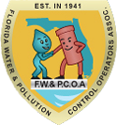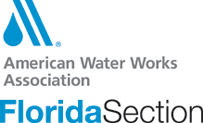Category Archives: Current News
AWWA Awarded EPA Grant to Bolster Water Workforce Leadership
The U.S. Environmental Protection Agency (EPA) has announced that the
American Water Works Association (AWWA) has been awarded a $852,000 grant
to support the Transformative Water Leadership Academy (TWLA), a collaborative
effort between AWWA and WaterNow Alliance (WaterNow), that cultivates and
develops the next generation of water utility leaders.
“This announcement is great news for the future of water,” said David LaFrance,
AWWA chief executive officer. “The EPA grant ensures the Transformative Water
Leadership Academy can offer more water professionals the opportunity to
develop the leadership skills they will need to address the complex challenges the
water sector faces today and into the future. By investing in these emerging
leaders, we, together with EPA, are investing in the future of water systems and
the communities they serve each and every day.”
The TWLA’s 10-month, cohort-based experiential leadership development
program prepares water leaders to address emerging water challenges through
the foundations of sustainable community leadership. The TLWA’s focus on
foundational pillars, such as diversity and community engagement, help ensure a
strong and sustainable water workforce that helps communities thrive.
“We are delighted to be continuing our partnership with AWWA in producing the
Transformative Water Leadership Academy,” said Cynthia Koehler, executive
director for WaterNow. “The TWLA is unique with its focus on environmental
sustainability, innovation, equity, and community trust-building to support
development of the water sector’s future leaders, and we are very grateful for
EPA’s support for the program.”
With the EPA grant, AWWA will fund two additional TWLA cohorts in 2025 and
2026. In addition to the core curriculum, the grant will allow for expanded
mentorship opportunities to support the continued professional development
and growth of program participants and graduates.
“Collaboration is essential to creating a sustainable and resilient water
workforce,” said Barb Martin, director, engineering and technical services,
AWWA. “The TWLA builds networks to support exchanging knowledge and best
practices to address the water challenges of today and into the future. We are
grateful to EPA for providing funding support to advance the TWLA program.”
The TWLA program is designed to:
Enhance leadership skills. Participants engage in a comprehensive
curriculum that covers topics such as public health protection,
environmental stewardship, community engagement, and innovative
problem solving.
Embrace diversity and inclusion. The program actively recruits a diverse
cohort of participants, reflecting the communities they serve.
Build a network. The TWLA connects participants with a network of
mentors and peers from across the water community, fostering
collaboration and knowledge sharing.
Drive community impact. Participants complete capstone projects that
address real-world water challenges in their communities.
The EPA Innovative Water Workforce Development Grant Program provided more
than $20 million in funding to support water workforce development and
advancement through initiatives that include apprenticeships, regional
collaboration, and leadership development.
Applications will be accepted for the 2025 TWLA cohort from August 1 through
September 25. For more information about the TWLA program and application
process, visit www.awwa.org/TWLA.
PFAS Surrogate Study Nears Completion
Research into surrogate compounds that can be used as standards to evaluate the
effectiveness of activated carbon and ion exchange technologies in removing a
wide range of per- and polyfluoroalkyl substances (PFAS) from drinking water has
been funded by the Water Quality Research Foundation (WQRF). University of
British Columbia researchers will discuss their work in a July 23 webinar.
The results will inform better testing protocols for water filtration systems as
public water suppliers work to meet U.S. Environmental Protection Agency
regulations and consumers become more aware of these contaminants in
drinking water supplies.
Also known as “forever chemicals,” PFAS are manmade chemical compounds that
persist in the environment for long periods of time. For decades, PFAS chemicals
have been used in industry and consumer products, from nonstick cookware to
stain-resistant furniture. Consequently, PFAS have been detected in the
environment and ultimately in water supplies, with higher levels observed in
areas affected by industrial activities.
While drinking water continues to be a source for exposure to PFAS and municipal
water entities work to deal with the new drinking water regulation, there is
growing interest in point-of-use and point-of-entry technologies as a means of
remediating PFAS, both in small water systems and for individual homeowners.
In addition to identifying surrogate compounds to represent both regulated and
unregulated PFAS compounds that are present in water, this research has helped
to underscore the crucial role of PFAS characteristics, such as chain length and
functional group, in determining adsorption properties.
Dr. Madjid Mohseni and Dr. Ehsan Banayan Esfahani will participate in the
webinar and both have prior experience in PFAS research. Professor Mohseni is
scientific director of Community Circle, a nonprofit organization focusing on
achieving socioeconomically and technologically sustainable outcomes in water
health for indigenous and rural communities. Esfahani, a postdoctoral fellow,
completed his Ph.D. on novel treatment technologies for PFAS and is involved in
several PFAS treatment projects based on adsorption and destruction techniques,
as well as conducting field studies at PFAS-contaminated sites.
The surrogate study is not a new research concept for WQRF; a 1998 study
identified chloroform as a surrogate for 53 regulated organic chemicals that
helped to lay the groundwork in NSF/ANSI standards for carbon filter
manufacturers to test removal effectiveness.
The PFAS surrogate project will be discussed in a free WQRF Summer School
webinar at noon, ET, on Tuesday, July 23. For more information or to register,
visit wqrf.org/webinars.




